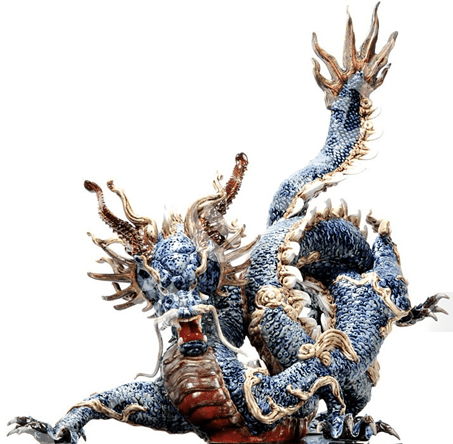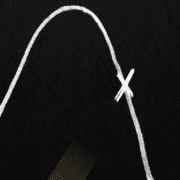Theory of Interest and Prices in Paper Currency Part V (Falling Cycle)
In Part I, we looked at the concepts of nonlinearity, dynamics, multivariate, state, and contiguity. We showed that whatever the relationship may be between prices and the money supply in irredeemable paper currency, it is not a simple matter of rising money supply à rising prices.
In Part II, we discussed the mechanics of the formation of the bid price and ask price, the concepts of stocks and flows, and the central concept of arbitrage. We showed how arbitrage is the key to the money supply in the gold standard; miners add to the aboveground stocks of gold when the cost of producing an ounce of gold is less than the value of one ounce.
In Part III, we looked at how credit comes into existence via arbitrage with legitimate entrepreneur borrowers. We also looked at the counterfeit credit of the central banks, which is not arbitrage. We introduced the concept of speculation in markets for government promises, compared to legitimate trading of commodities. We also discussed the prerequisite concepts of Marginal time preference and marginal productivity, and resonance.
In Part IV, we discussed the rising cycle. The central planners push the rate of interest down, below the marginal time preference and unleash a storm whose ferocious dynamics are more than they bargained for. The hapless subjects of the regime have little recourse but they do have one seeming way out. They can buy commodities. The cycle is a positive feedback loop of rising prices and rising interest rates. Ironically, their clumsy attempt to get lower interest results in rising interest. Alas, the cycle eventually ends. The interest rate and inventory hoards have reached the point where no one can issue more bonds or increase their hoards.
In this Part V, we discuss the end of the rising cycle and the start of the falling cycle. We examine its dynamics and its mode of capital destruction. Lastly we look at the response of the central bank.
It is not possible to pay debts with inventories of completed or partially completed product, nor even with raw commodities. In order to circulate as money, a good must have an extremely narrow bid-ask spread. Commodities have a wide spread, especially in the environment of the late stages of the rising cycle. Liquidations are pushing the bid down. The ask side is still being pushed up, by those businesses which are still buying. Work in progress of course could not be sold, except to another company in the same industry.
Recall that the rising cycle is driven by selling bonds to build inventories. This creates a conflict: the desire to accumulate more inventories because prices are rising rapidly vs. the need for cash to service the debt. In any conflict between want and need, between speculation and leverage, the latter must win in the end. At the same time that the marginal utility of the unit of hoarded goods is falling, the amount owed is rising.
The backdrop is layoffs and liquidations, as each time a company’s capital and plant must be renewed, it is harder and harder to make a business case. If it is profitable to borrow at 7% to buy machines to manufacture cameras, it may not be profitable at 14%. So factories are closed, resulting in liquidations. People lose their jobs, resulting in increasing softness in the consumer bid for goods.
Eventually, as it must, the trend comes to its ignominious end. The interest rate spikes up one final step higher as banks are taking capital losses and become even more reluctant (or able) to lend. The rate of interest is now, finally, above marginal time preference. That spread is reverted to normalcy. Unfortunately, the other spread discussed in Part III inverts.
That other spread is marginal productivity to the rate of interest; the latter is now above the former. I mentioned in Part IV that many people credit Paul Volcker for “breaking the back of inflation” in 1981. The central planners cannot change the primary trend, and in any case the problem was not caused by the quantity of money, so the solution could not have been reducing the money supply. At best, if he pushed up the rate of interest he accentuated the trend and helped get to the absolute top. The 10-year Treasury bond traded at a yield around 16%.
The rising cycle was driven by rising time preference that caused rising interest as businesses borrowed to finance inventories which caused time preference to rise further. During this process, at first one by one and then two by two, enterprises were forced to close and liquidate their inventories, as their businesses could not earn the cost of capital. This force opposed the rising cycle.
Now it fuels the falling cycle. The only good thing to be said is that interest rates are not rising and therefore viable companies are not squeezed out due to rising cost of capital. The wrecking ball of rising rates has finished on that side of the street. It is done destroying capital by rendering it sub-marginal, when it cannot produce enough to justify borrowing at the higher rate of interest.
As we shall see, that wrecking ball will not repair the damage it has done when it swings to the other side. A falling rate destroys capital also, though by a different mechanism. It causes the Net Present Value (NPV) of every bond to rise. This is because the NPV of a stream of future payments is calculated by discounting each future payment by the interest rate. The lower the interest, the lower the discount for all future payments. This is why the bond price rises.
Falling interest rates benefit one group. The bond speculators get rich. They can buy bonds, wait a little while, and sell them for a profit. The bond bull market starts off slowly but becomes ferocious over time. In nature, if a source of readily usable energy exists then a specialized organism will evolve to exploit it and feed off it. This is true for plants and animals in every niche on dry land, and it is for strange sea creatures near volcanic vents on the icy sea floor. Plants convert sunlight into sugars and animals eat plants, etc. The same is true for free profits being offered in the bond market. A whole parasitic class develops to feed off the free capital being offered there.
Savers and pension funds cannot profit from falling rates because they hold until maturity. The more the interest rate falls, the more they are harmed. The lack of savings is another blow to the economy, as it is savings that is the prerequisite to investment and investment is the prerequisite to jobs and rising wages.
By contrast, the speculators are not in the game for the interest payments. They are in for capital gains.
Where does their free profit come from? It comes from the capital accounts—from the balance sheets—of bond issuers. Anyone who has sold a bond or borrowed money with a fixed-rate loan should mark up the liability, to market value. I have written previously on the topic of falling interest rates and the destruction of capital.[1]
On the way up, businesses could seemingly dictate whatever prices they felt like charging. Recall my example of cans of tuna fish in the 1970’s; stores were re-stickering them with higher prices even in the short time they sat on the shelves. My theory predicts that gross margins must have been rising everywhere, especially if companies managed their inventory to move from input to final sales over a long period of time (this would be worth researching in further papers).
But today, they have not this power. Even in industries where prices have been rising, the consumer is reluctant and sluggish to pay and there are many competing alternatives. In other industries (recall my example of Levis jeans, which applies to clothing in general) there seems to be no pricing power. Many stores in the mall have permanent signs offering big discounts; I regularly see 60% off.
What is it about rising interest rates that allows for aggressively expanding prices and margins, and falling rates that compresses margins and prices?
We said in Part III:
What is the bond seller—the entrepreneur—doing with the money raised by selling the bond? He is buying real estate, buildings, plant, equipment, trucks, etc. He is producing something that will make a profit that, net of all costs, is greater than the interest he must pay. He is doing arbitrage between the rate of interest and the rate of profit.
As the interest rate ticks upwards, every producer in every business must adapt his business model to the higher cost of capital. They must earn a higher gross margin, in order to pay the higher interest rate. Higher rates must necessarily drive higher gross margins. We have discussed two ways to get a higher margin: (1) a long lag between purchase of inputs and sale of outputs and (2) higher prices. Strategy #1 is the reaction to the inverted interest to time preference spread. Strategy #2 is the reaction to higher interest rates and thinning competition.
The burden of debt is falling when the interest rate is rising, and we can see it in the reduced competitive pressures on margins. Of course, we are now in the falling cycle and the opposite applies. If one wants to track the “money supply”, one can think of the money going, not into consumer goods or commodities, but into productive capacity. I propose that one should think of inflation not in terms of the “money supply” but in terms of counterfeit credit.[2] In the rising cycle, counterfeit credit is going into commodities. In the falling cycle, by contrast, it is going into bonds that finance government and also productive capacity.
I call it a “ferocious” bull market in bonds because it is gobbling up the capital of businesses who borrow (and they have to borrow in order to keep up with their competitors). The competition is ferocious, because each new business can borrow at lower rates than incumbent competitors. The new entrant has a permanent competitive advantage over the old. Then the rate falls further and the next new entrant enters. The previous new entrant is now squeezed, doubly so because unemployment is rising. The prior incumbent is wiped out, its workforce is laid off, and its plant and inventory is sold off. Unemployed workers are not able to aggressively bid up prices. There is, by the way, another reason why falling rates cause unemployment. There is always a trade-off between capital invested to save labor vs. employing labor. At lower cost of borrowing money, the balance tilts more heavily in favor of investment.
In the falling cycle, a vicious one-two punch is delivered to productive enterprises. Low margins make it necessary, and low interest makes it possible, to use big leverage relative to its equity. There is a term for a company with low and shrinking margins and high leverage.
“Brittle”.
If you have ever owned one of those impossibly delicate glass figurines with long tendrily tails, whiskers, manes, and tongues, you know that the slightest bump causes it to break. The same is true for many businesses in the falling cycle. In any case, it is only a matter of a sufficient drop in the interest rate for many to be wiped out.
Opposite to Fekete’s Dilemma, the problem now is that the cheaper one finds the cost of borrowing, the more meager are the opportunities to profit combined with the higher the price of capital goods.
The falling cycle is a cycle of capital churn. Perfectly good capital is wiped out by the dropping interest rate, which gives incentive to a new entrepreneur to borrow to build what is essentially a replacement for the old capital. And then his capital is replaced by churn, and so on.
So long as the interest rate remains above marginal productivity (and marginal time preference), people choose to buy the bond over buying commodities. The burden of debt is rising. As Irving Fisher wrote in 1933, “…the more debtors pay, the more they owe.” It is better to be a creditor than a debtor (until the debtor defaults).
Businesses, struggling under this burden, do everything possible to squeeze inventory and fixed capital out of their businesses, and buy back some of their debt. This adds more oil to the fire of rising bond prices and falling interest rates. It is no coincidence that Lean, the Toyota Way, began to be widely adopted in the 1980’s. It was not well suited to the rising cycle of the post WWII era, but it was demanded by the falling cycle after Volcker.
Meanwhile, the central bank is not idle. What does every central bank in the world say today? They are fighting the monster of “deflation”. How? They want to increase the money supply. How? They buy bonds.
The bond bull market is ferocious indeed.
The last falling cycle ended just after World War II. The situation today is unlike that of 1947. One key difference is that credit expansion to fuel the falling cycle was limited by the ties to gold that were still partially in place after FDR’s 1933 gold confiscation and kept in place in the Bretton Woods Treaty in 1944. Today, there is no such constraint and so the end of the falling cycle will be quite different, as we explore in Part VI.
[1] Falling Interest Rates Destroy Capital
[2] Inflation: An Expansion of Counterfeit Credit








Another great post! Thanks Keith
Excellent reading.
Agreed. Putting the flesh of historical detail on this revision of ABCT adds greatly to its persuasive force. The “wrecking ball” analogy still works well, but I feel that it suggests there might be more to it (as a direct physical analog). Specifically, a wrecking ball has Mass and operates in a Gravitational field by storing and releasing potential energy. What features of human nature, society etc impart that mass and that gravity? Do interest rates actually have a momentum? Your analysis by arbitrage is essentially a differential equation. Have you tried writing it all out as such?
The builders of fixed capital, conventionally financed, clearly expect the wrecking ball of interest rate fluctuation to stay put. We claim that gold in the monetary system is the damper that suppresses this resonance. Are we just using our engineering world-views to project this, or can we support this analogy with detailed economic documentation & theory?
Conversely, if we accept the “creative destruction” imperative in capital formation, we should posit another home for the force of capital destruction – one that’s more distributed, possibly more random, without the coherence of its parts that make it vulnerable to resonance.
With any analogy, there is a way it applies and a way it doesn’t necessarily apply. I meant it simply to show that swinging to the other side of the street does not repair the damage already done. That said, I think you make a point that there *IS* an inertia, a state, a transform of kinetic to potential energy and back to kinetic energy again. This is where oscillation, resonance, and positive feedback comes in.
Here is a graph of the interest rate on the 10-year bond (http://static.cdn-seekingalpha.com/uploads/2012/6/7/saupload_Screen_shot_2012-06-07_at_3.44.58_PM.png). It was very stable from the Founding of this country through the inception of the Fed. There were spikes due to wars and other disruptions, but if one excludes those, there is little variance.
After 1913, it becomes destabilized.